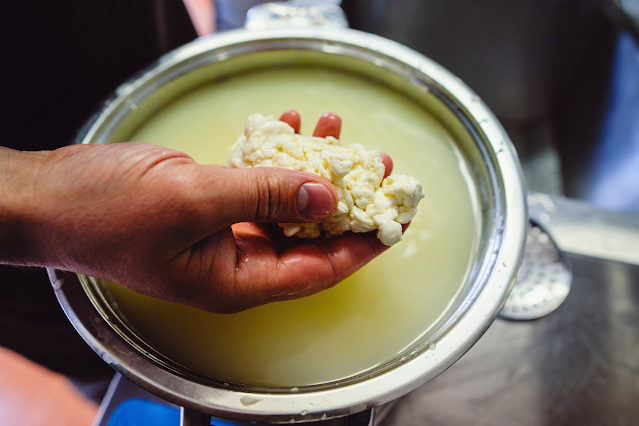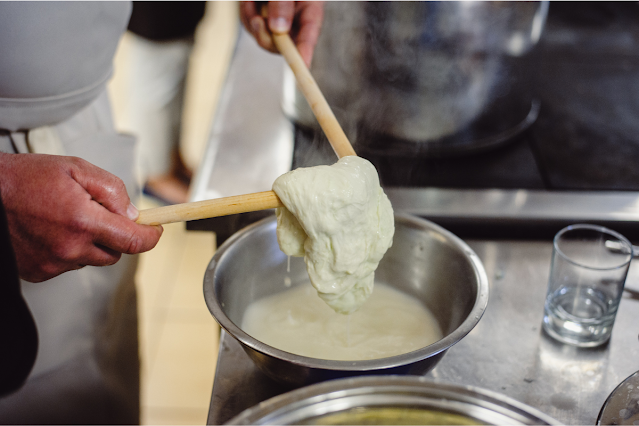How to Make Mozzarella at Home
Mozzarella has long been celebrated for its creamy texture and mild flavor, making it a staple in many dishes from pizza to caprese salads. Originating from Italy, mozzarella is traditionally made from buffalo milk, but today, cow's milk is more commonly used. The satisfaction of crafting your own mozzarella at home is unmatched, and the taste of fresh, homemade mozzarella is well worth the effort.
List of Ingredients Needed
To create your own mozzarella, you'll need the following ingredients:
- Fresh whole milk (not ultra-pasteurized)
- Rennet (available in tablet or liquid form)
- Non-iodized salt
- Citric acid or fresh lemon juice
Equipment Required
Gather the following equipment to make your mozzarella:
- Large, stainless steel pot
- Thermometer (digital or candy thermometer)
- Slotted spoon
- Microwave-safe bowl
- Microwave (for heating and stretching)
Step-by-Step Instructions for Preparing Curds
Step 1: Heat the Milk
Pour fresh whole milk into a large stainless steel pot. Heat the milk to 90°F (32°C), stirring occasionally to ensure even heating.
Step 2: Add Citric Acid
Dissolve 1.5 teaspoons of citric acid in 1/4 cup of cool, non-chlorinated water. Pour the solution into the milk and stir thoroughly. This will help the milk curdle.
Step 3: Heat the Milk Further
Continue to heat the milk until it reaches 105°F (40°C).
Step 4: Add Rennet
Dilute 1/4 teaspoon of liquid rennet in 1/4 cup of cool, non-chlorinated water. Add this mixture to the milk and stir gently for 30 seconds.
Step 5: Allow the Curd to Set
Cover the pot and let it sit undisturbed for 5 minutes. This allows the curd to form. After 5 minutes, check for a clean break by inserting a knife into the curd and lifting gently. If the curd cuts cleanly and the whey is clear, it's ready.
Guide to Stretching and Shaping Mozzarella
Step 6: Cut the Curd
Cut the curd into 1-inch squares using a long knife. Let the curd rest for 5 minutes to firm up.
Step 7: Heat and Stir the Curds
Slowly heat the curds and whey to 135°F (57°C) while gently stirring. This helps the curds firm up further.
Step 8: Drain the Whey
Remove from heat and continue to stir for 5 minutes. Then, drain off as much whey as possible, leaving just the curds.
Step 9: Microwave the Curds
Place the curds in a microwave-safe bowl and microwave on high for 1 minute. After microwaving, drain off any excess whey and knead the curds with your hands or a spoon.
Step 10: Stretch and Shape the Mozzarella
Microwave the curds two more times, kneading in between each heating session, until the cheese reaches 135°F (57°C) and becomes stretchy. Stretch and fold the cheese until smooth and elastic. Shape it into a ball or your desired form.
Tips for Storage and Serving
Storage
Store homemade mozzarella in a container of cold, salted water in the refrigerator for up to a week. For best results, change the water every couple of days.
Serving
Serve fresh mozzarella at room temperature for the best flavor and texture. It pairs beautifully with tomatoes, basil, olive oil, and a sprinkle of sea salt.
Troubleshooting Common Issues
Curds Not Forming
If the milk doesn't set into curds, check the milk's freshness and ensure it's not ultra-pasteurized. Increase the rennet quantity slightly to help with coagulation.
Curds Too Hard
Overcooking the curds can make them too hard. Ensure the milk is not overheated during the process and handle the curds gently.
Mozzarella Too Firm or Rubbery
Over-kneading or overheating the mozzarella during the stretching process can lead to a rubbery texture. Handle the curds more gently and for a shorter time, or lower the stretching temperature.
Mozzarella Not Stretching
If the curds aren't stretching as expected, they may not have reached the right acidity level. Allow the curds to sit for an additional 5 minutes after cutting and before heating.
Bitter Taste
A bitter taste can be a sign of over-acidification. Ensure you are using the correct amount of citric acid or lemon juice, and do not overheat the milk during the curd formation.
Mozzarella Too Salty
If the mozzarella is too salty, reduce the amount of salt used or adjust the brining time. Be mindful of the salt content in other ingredients used.
Mozzarella Won't Hold Shape
If the mozzarella is losing its shape, it may not have been kneaded or shaped enough. Ensure the mozzarella is worked sufficiently during the stretching process to develop the desired texture and shape.
Cloudy Water During Curd Formation
Cloudy water can indicate insufficient draining of the whey or over-acidification. Drain the whey thoroughly before shaping the curd, and ensure proper measurements of citric acid or lemon juice.
Encouragement
Making mozzarella at home might seem like a daunting task, but with the right ingredients, equipment, and patience, it's a rewarding experience that offers unparalleled satisfaction. Fresh, homemade mozzarella enhances any dish and provides a sense of accomplishment that store-bought cheese simply can't match.
We encourage you to give it a try and share your homemade mozzarella stories or photos with us.
If you're looking for a simpler cheese-making project before attempting mozzarella, we highly recommend visiting our post on making ricotta cheese at home. Ricotta is even easier to make and requires fewer ingredients and less equipment. It's a great way to build your confidence and skills in cheese-making before tackling more complex recipes. Happy cheese-making!
Happy cheese-making!





Comments
Post a Comment